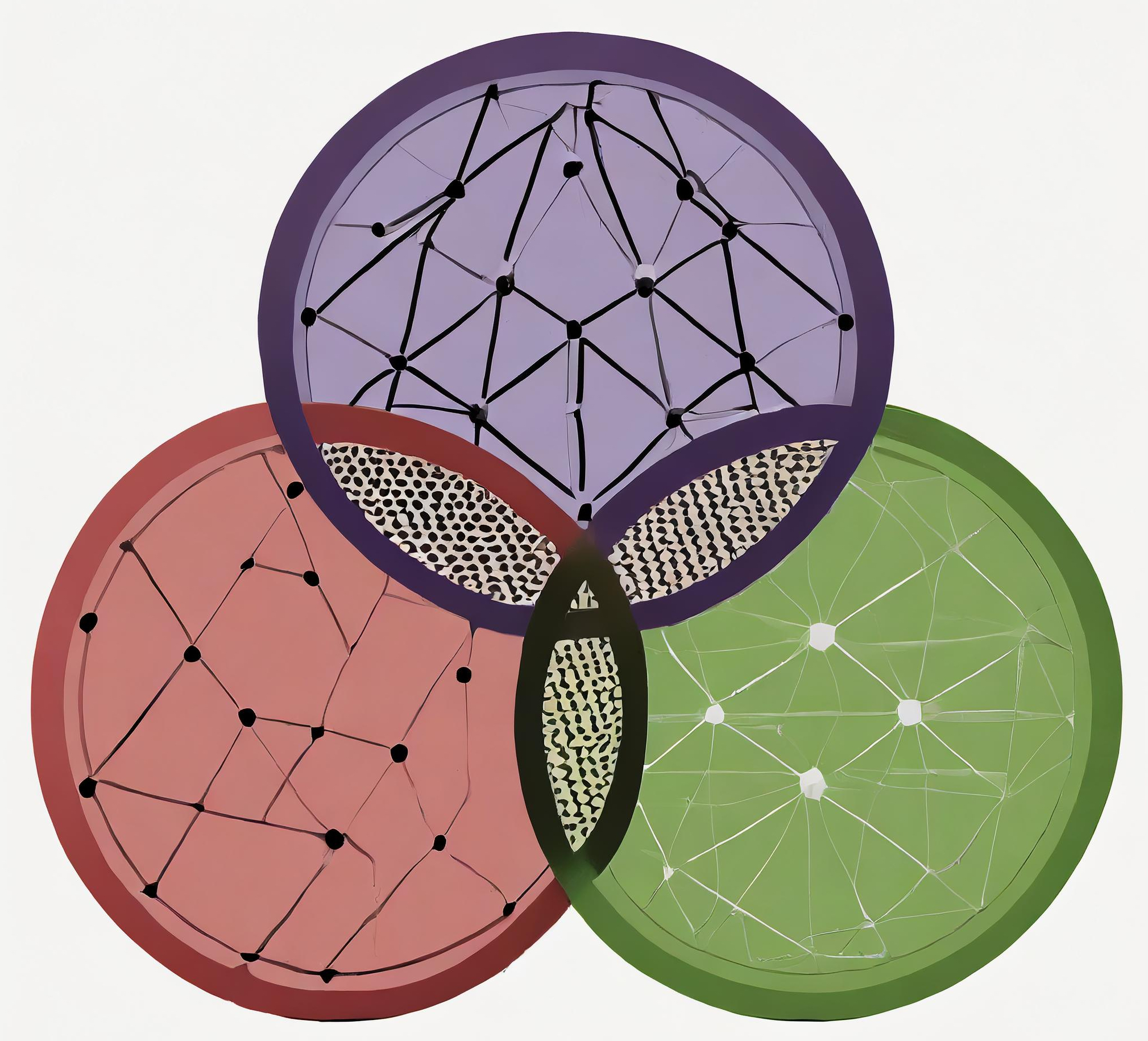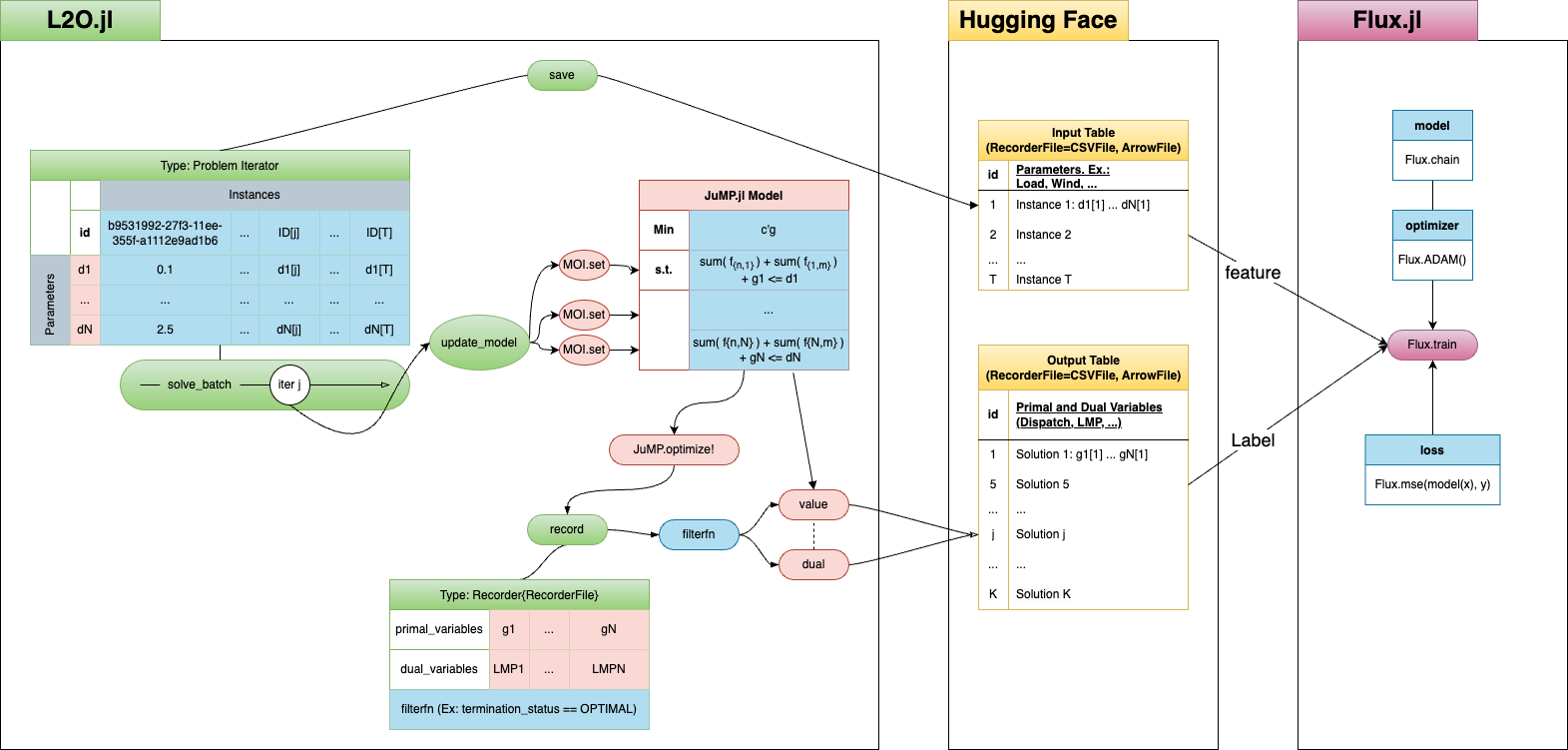Learning to optimize (LearningToOptimize) package that provides basic functionalities to help fit proxy models for optimization.
This package provides a basic way of generating a dataset of the solutions of an optimization problem by varying the values of the parameters in the problem and recording it.
The user needs to first define a problem iterator:
# The problem to iterate over
model = Model(() -> POI.Optimizer(HiGHS.Optimizer()))
@variable(model, x)
p = @variable(model, p in MOI.Parameter(1.0)) # The parameter (defined using POI)
@constraint(model, cons, x + p >= 3)
@objective(model, Min, 2x)
# The parameter values
parameter_values = Dict(p => collect(1.0:10.0))
# The iterator
problem_iterator = ProblemIterator(parameter_values)The parameter values of the problem iterator can be saved by simply:
save(problem_iterator, "input_file", CSVFile)Which creates the following CSV:
| id | p |
|---|---|
| 1 | 1.0 |
| 2 | 2.0 |
| 3 | 3.0 |
| 4 | 4.0 |
| 5 | 5.0 |
| 6 | 6.0 |
| 7 | 7.0 |
| 8 | 8.0 |
| 9 | 9.0 |
| 10 | 10.0 |
ps.: For illustration purpose, I have represented the id's here as integers, but in reality they are generated as UUIDs.
Then chose what values to record:
# CSV recorder to save the optimal primal and dual decision values
recorder = Recorder{CSVFile}("output_file.csv", primal_variables=[x], dual_variables=[cons])
# Finally solve all problems described by the iterator
solve_batch(problem_iterator, recorder)Which creates the following CSV:
| id | x | dual_cons |
|---|---|---|
| 1 | 2.0 | 2.0 |
| 2 | 1.0 | 2.0 |
| 3 | -0.0 | 2.0 |
| 4 | -1.0 | 2.0 |
| 5 | -2.0 | 2.0 |
| 6 | -3.0 | 2.0 |
| 7 | -4.0 | 2.0 |
| 8 | -5.0 | 2.0 |
| 9 | -6.0 | 2.0 |
| 10 | -7.0 | 2.0 |
ps.: Ditto id's.
Similarly, there is also the option to save the database in arrow files:
recorder = Recorder{ArrowFile}("output_file.arrow", primal_variables=[x], dual_variables=[cons])In order to train models to be able to forecast optimization solutions from parameter values, one option is to use the package Flux.jl:
# read input and output data
input_data = CSV.read("input_file.csv", DataFrame)
output_data = CSV.read("output_file.csv", DataFrame)
# Separate input and output variables
output_variables = output_data[!, Not(:id)]
input_features = innerjoin(input_data, output_data[!, [:id]], on = :id)[!, Not(:id)] # just use success solves
# Define model
model = Chain(
Dense(size(input_features, 2), 64, relu),
Dense(64, 32, relu),
Dense(32, size(output_variables, 2))
)
# Define loss function
loss(x, y) = Flux.mse(model(x), y)
# Convert the data to matrices
input_features = Matrix(input_features)'
output_variables = Matrix(output_variables)'
# Define the optimizer
optimizer = Flux.ADAM()
# Train the model
Flux.train!(loss, Flux.params(model), [(input_features, output_variables)], optimizer)
# Make predictions
predictions = model(input_features)Future features:
- ML objectives that penalize infeasible predictions;
- Warm-start from predicted solutions.



